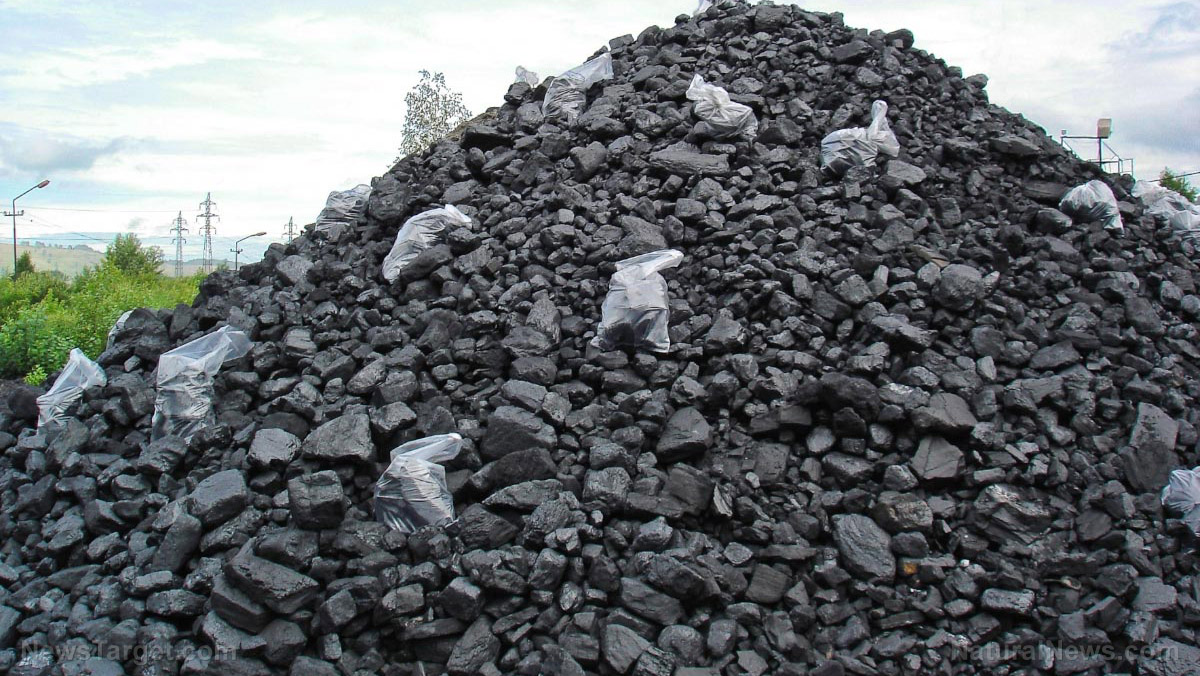- China and India drive coal consumption to historic highs, with China accounting for 30% of global use and India projected to double U.S./EU consumption within a year.
- Executive orders prioritize coal mining and export to support energy security and AI infrastructure.
- Despite record growth, renewables fall short of replacing coal’s dominance in power generation.
- Coal remains vital for data centers, AI hubs and steel production amid rising energy demand.
- Nations like the U.K. allegedly “hypocritically” support coal to avoid economic collapse despite climate pledges.
In 2024, global coal consumption reached an unprecedented 8.77 billion metric tons, with China and India driving a historic surge in reliance on the fossil fuel. Despite global climate accords, coal-generated electricity hit a record 10,700 terawatt-hours, accounting for 35% of the world’s power supply. The International Energy Agency (IEA) attributes this boom to China’s 56% global share and India’s 70%-plus electricity dependence on coal. Meanwhile, the U.S. under President Donald Trump has championed coal as “clean and essential,” revamping policies to accelerate mining and export. This shift underscores a stark reality: coal remains indispensable for economic growth and industrialization, complicating climate targets amid surging energy demands.
Asia’s relentless coal boom and its global echo
China’s coal use, already three times that of every other nation combined, soared past 4.4 billion tons in 2023 while India raced to produce 700 million tons, with projections of exceeding 1 billion tons by 2025. The pivot reflects a pragmatic calculus: coal meets 70% of India’s electricity needs, while China relies on it for power for its sprawling cities, AI data centers and 30 new ultra-supercritical plants. Indonesia, Vietnam and the Philippines further fuel demand, mirroring the continent’s “coal-first” growth model.
“Coal is the backbone of our energy security,” said an Indian industry insider, noting that 1,500 MW plants like Adani’s Uttar Pradesh project are pivotal in powering regions with 80% of the global population. Africa likewise resurrects lagging projects, with South Africa’s Eskomcaptures 70% of electricity from coal, while Zambia and Zimbabwe restart mines to counter power shortages. Even the U.K., steadfast in its “net zero” rhetoric, quietly imports coking coal to bail out British Steel—a contradiction Christine Shearer of Global Energy Monitor terms “hypocrisy in action.”
The U.S. pivot: Trump’s executive orders reignite coal’s political power
In April 2025, Trump’s executive orders enshrined coal as a national priority, fast-tracking mines in Alabama and Montana while rescinding EPA restrictions on carbon emissions. The orders mandate agencies evaluate coal as a critical mineral, eliminate export barriers and expedite data center partnerships with coal infrastructure. The Department of Energy estimates this could reduce electricity costs and secure supply for AI computing hubs, which alone consume 30% of U.S. grid capacity.
“Our coal resources are worth trillions and ensure energy dominance,” Trump declared. The policy reversal marks a sharp contrast to former climate regulations, removing “discriminations” against coal projects. This shift aligns with Senate approvals for Warrior Met’s 60% boost in metallurgical coal production, vital to global steel demand.
Renewables: Growth vs. realities are uneven
While renewable energy surged by 585 gigawatts in 2024—92.5% of all capacity growth—the pace is insufficient. Environmentalists warn wind and solar must grow 16.6% annually until 2030 to meet targets, but developing economies caution renewables cannot yet replace coal’s dependability. “Renewables have not replaced fossil fuels, only kept pace with rising demand,” said Rana Adib of REN21. Even the IEA’s projected 2030 peak hinges on China and India transitioning, a likelihood analysts dismiss as “wishful thinking.”
In the U.S., renewables face challenges too, as 40 coal plants, including Appalachian hubs, delay closures over grid insecurities driven by solar/wind intermittency.
The global dilemma: Economic progress vs. climate aspirations
Decades after the Industrial Revolution, coal’s seemingly eternal reign raises critical questions. Proponents argue it’s a lifeline for billions, powering factories, transportation and basic services. Critics counter its environmental costs—China’s 2023 CO2 emissions from coal alone hit 5.56 billion tons. Yet, as Vijay Jayaraj, once a child staring into energy-starved darkness in India, now observes: “Coal didn’t just light my childhood—it ignited entire nations.”
A new era of contradictions shapes energy’s future
As coal’s global dominance persists, the world faces a paradox: coal fuels modern economies, yet stifles climate goals. While renewables advance, coal’s role as an “energy staple” for over 3,000 years of reserves secures its relevance. Whether through U.S. executive orders or Asia’s expansion projects, coal’s survival hinges less on eco-vows than on its unmatched capacity to meet humanity’s hunger for energy. As nations prioritize growth over decarbonization, coal’s kingship endures—a testament to old truths in a fractured world.
Sources for this article include:
